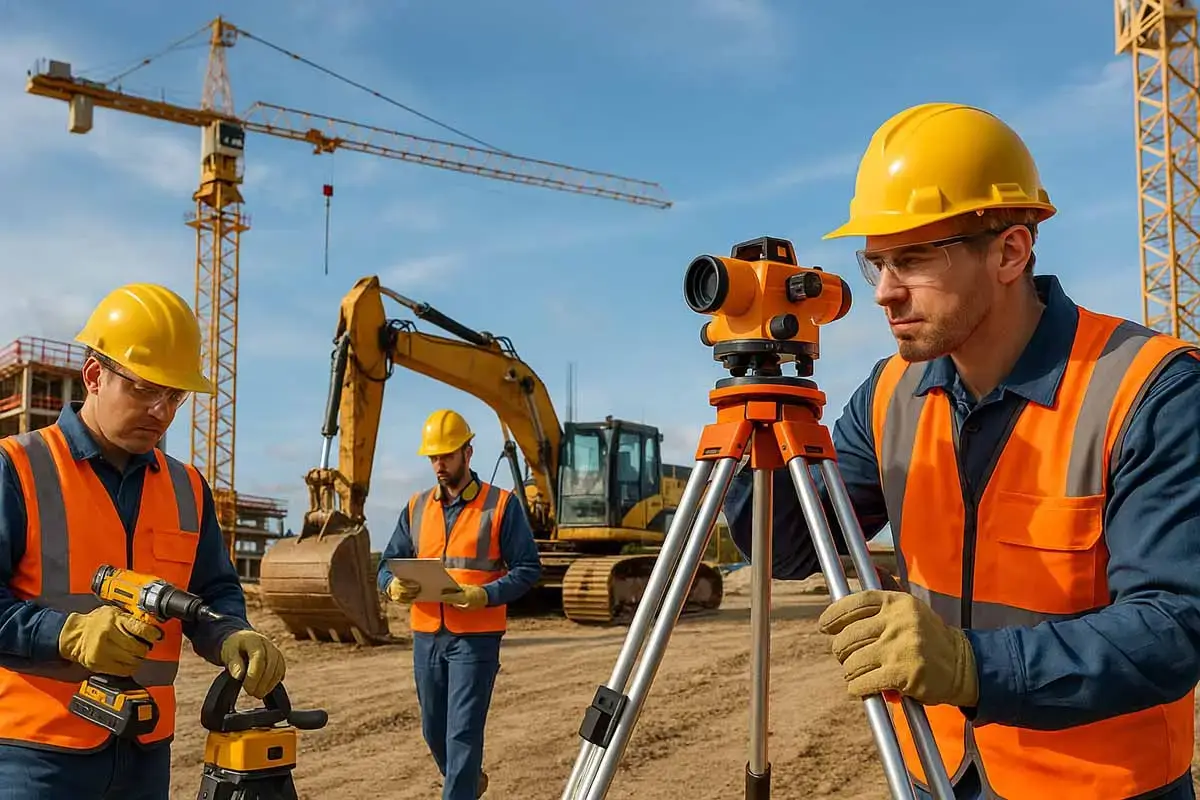Introduction: The Foundation of Construction Success
The construction industry builds the homes, offices, bridges, and infrastructure that shape our modern world. Behind every project, from towering skyscrapers to underground tunnels, stand industrial tools that make the work faster, safer, and more efficient.
This article explores the essential categories of industrial tools in construction, their technical specifications, benefits, and drawbacks. We’ll also answer common questions you may have and give you insights into how technology is reshaping the building landscape.
Key Categories of Industrial Tools in Construction
1. Earthmoving and Excavation Tools
- Examples: Excavators, bulldozers, trenchers, backhoes.
- Key Feature: Designed for heavy lifting and soil movement.
- Challenge: High fuel consumption and emissions.
2. Concrete and Masonry Tools
- Examples: Power trowels, rebar cutters, concrete mixers, laser screeds.
- Key Feature: Ensure uniform strength and smooth finishes.
- Challenge: Dust and vibration risks for workers.
3. Lifting and Hoisting Equipment
- Examples: Tower cranes, mobile cranes, hoists, and winches.
- Key Feature: Capable of lifting loads of up to several hundred tons.
- Challenge: Safety risks if not properly maintained.
4. Power Tools and Hand Tools
- Examples: Rotary hammers, cordless drills, angle grinders, torque wrenches.
- Key Feature: Ergonomic and portable for diverse tasks.
- Challenge: Frequent wear and need for battery or power source.
5. Safety and Monitoring Tools
- Examples: Laser distance meters, drones for site inspection, hard-hat sensors, gas detectors.
- Key Feature: Support worker safety and real-time monitoring.
- Challenge: Requires integration with digital construction management systems.
Technical Specifications That Matter
- Excavator Bucket Capacity: Up to 6 m³ for large-scale earthmoving.
- Concrete Mixer Volume: 250 to 500 liters for standard mixers.
- Tower Crane Load Capacity: Often 10–20 tons, with booms exceeding 70 meters.
- Laser Distance Meters: Accuracy up to ±1 mm over 100 meters.
- Personal Safety Sensors: Detect hazardous gases or fatigue indicators in real time.
Pros and Cons of Industrial Tools in Construction
Advantages:
- Accelerate project timelines with efficient heavy machinery.
- Improve worker safety with smart monitoring devices.
- Ensure precision in modern construction methods like BIM (Building Information Modeling).
- Support large-scale projects like skyscrapers, bridges, and underground metros.
Disadvantages:
- High capital investment and operational costs.
- Heavy fuel consumption and environmental impact.
- Require skilled operators and ongoing certification.
- Risk of downtime if equipment is not properly maintained.
Interesting Facts
Funny Fact: The world’s largest crane can lift over 3,000 tons – workers joke it could “pick up a small city block and move it across town.”
Lesser-Known Fact: Some construction companies now use 3D concrete printers capable of printing entire small houses in less than 24 hours.
Frequently Asked Questions (FAQ)
1. What are the most important industrial tools in construction?
Excavators, cranes, concrete mixers, power tools, and safety monitoring devices top the list.
2. Why is precision so critical in construction tools?
Even a few millimeters off in foundation alignment can compromise the stability of a building.
3. How do drones help in construction projects?
They provide real-time aerial site inspections, progress monitoring, and 3D mapping.
4. What safety tools are standard on modern construction sites?
Gas detectors, hard-hat sensors, fall arrest systems, and laser measurement devices.
5. Are construction tools being automated?
Yes, robotic bricklayers, 3D concrete printers, and AI-driven monitoring systems are becoming more common.
6. How much can a tower crane typically lift?
Most standard tower cranes lift 10–20 tons, though specialized cranes can exceed 3,000 tons.
7. What are the biggest challenges in maintaining construction tools?
Regular servicing, skilled labor shortages, and ensuring compliance with safety regulations.
Conclusion: Building Tomorrow’s Cities with Today’s Tools
The construction industry depends on industrial tools to transform blueprints into reality. From excavators digging foundations to cranes lifting steel frameworks, these tools are the lifeline of modern building projects.
As the industry embraces automation, AI, and green construction methods, the tools of tomorrow will be smarter, more efficient, and environmentally friendlier — helping us build a sustainable future.
💬 Your Turn:
Have you worked with industrial tools in construction? Share your experiences and insights in the comments below – and don’t forget to share this article on social media to inspire others in the industry.


